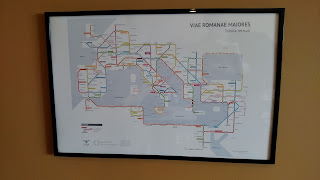I’m pleased to say that my report on Maryland transportation
performance measures is now available here.
This is work that I have done for 1,000 Friends of Maryland
and the Central Maryland Transportation Alliance, two excellent nonprofit
advocacy groups that have been leading the struggle to defend and improve good
transportation decision-making in the state.
The back story (very condensed) is that as a result of the
last gubernatorial election, Maryland transportation and land use decision-making
took one of its periodic steps backward (elections have consequences!). The Legislature, with outside
leadership supplied by 1,000 Friends and CMTA, enacted a law requiring a
quantitative, transparent project selection process for transportation capacity
increase projects as a way of preventing too much slippage. The law specified a set of goals and
performance measures and directed the Maryland Department of Transportation
(MDOT) to adopt implementing regulations.
MDOT said – rather incredibly – that these performance measures were too
difficult to implement. As part of
the ensuing hullabaloo (you don’t want to know all the details), I was brought
on board to demonstrate that implementing these performance measures is, in
fact, very doable. Hence, the
current report, which is an expanded version of legislative testimony submitted
previously by 1,000 Friends and CMTA.
The report reviews each of the statutory performance
measures and identifies best practices which MDOT can bring in to implement the
law. (Interestingly, MDOT is now
circulating a draft report that aims at getting back in the game.)
This controversy is not over, but I think the takeway is
that advocacy groups, if they stay focused and bring in expert help, can hold
agencies to a higher standard. DOTs
do better when they have energetic, well-informed, and well-equipped groups
engaging with them.






























